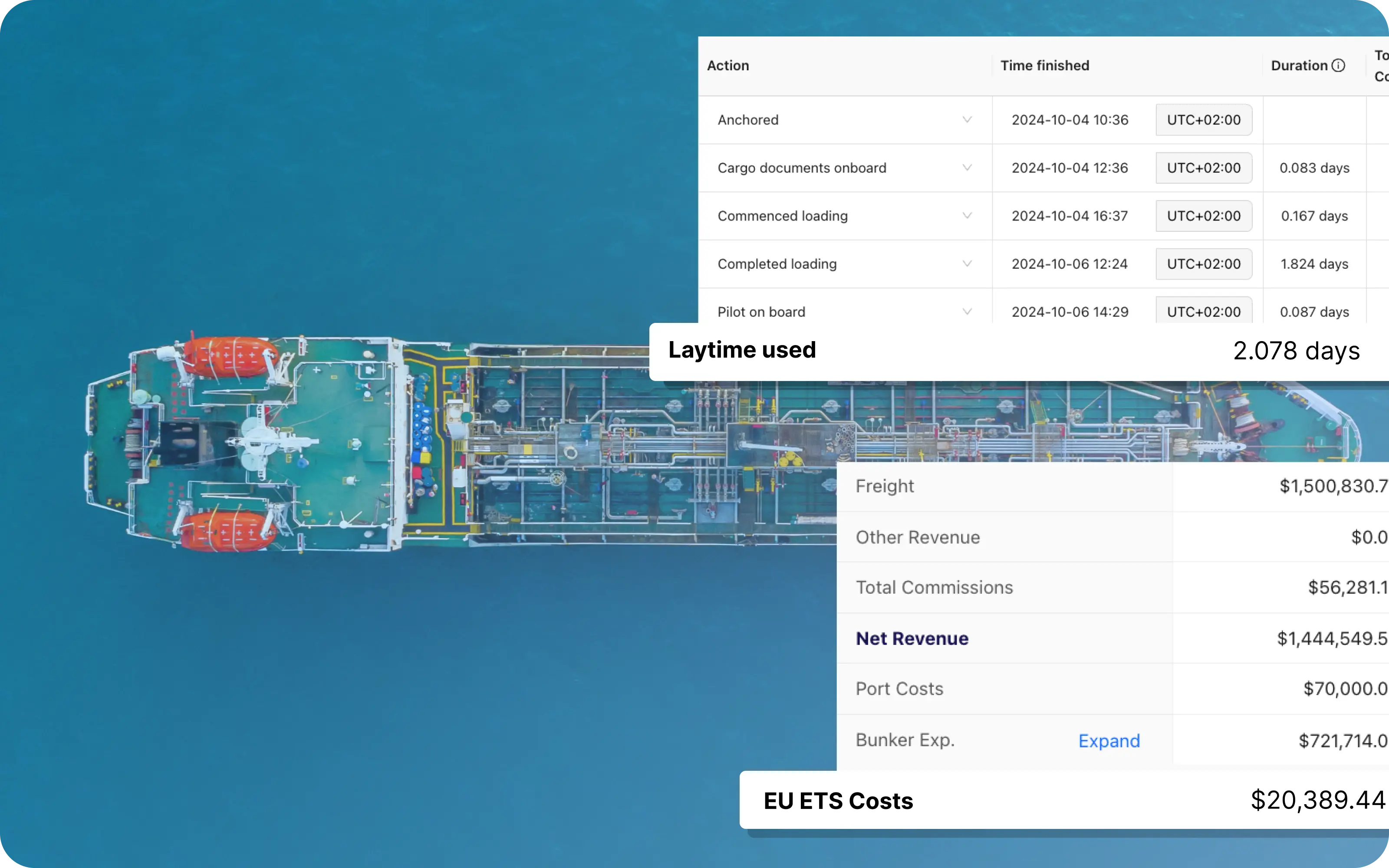Oct 16, 2024
In maritime shipping, efficient operations and tight management of time-sensitive activities are essential for profitability. Two critical terms in voyage charter contracts that relate directly to time management are Demurrage and Despatch. These terms can significantly affect a company's financial outcome depending on how laytime— the time allowed for loading and unloading cargo—is calculated and managed. In this article, we’ll explore demurrage, despatch, and the importance of laytime calculations in shipping operations.
What is Demurrage?
Demurrage refers to the penalty a charterer must pay if the loading or unloading of cargo takes longer than the agreed laytime in the charter party (the contract governing the voyage). Once the agreed laytime expires, the ship owner charges demurrage to compensate for the extra time the vessel spends in port.
Essentially, demurrage acts as a disincentive for delays in cargo operations. The charges vary depending on the contract and are usually calculated per day or per hour of delay. Prolonged demurrage periods can result in significant financial losses for charterers, especially if they lead to additional operational costs or affect future schedules.
Key Factors Leading to Demurrage:
Port Congestion: Ships may have to wait for an available berth.
Poor Weather Conditions: Bad weather can halt loading/unloading operations.
Inefficient Cargo Handling: Delays in the loading/unloading process can extend laytime.
Documentation Issues: Delays in receiving proper clearance and paperwork.
Example: A ship has 48 hours of agreed laytime to load cargo. Due to delays, the cargo takes 60 hours to load. The extra 12 hours are subject to demurrage charges according to the rate specified in the charter party.

What is Despatch?
In contrast to demurrage, despatch is a reward to the charterer if the loading or unloading of cargo is completed before the laytime expires. Essentially, despatch incentivizes efficient cargo handling, as the shipowner compensates the charterer for saving time.
Despatch is typically half of the demurrage rate, although the specifics can vary based on the terms of the contract. For shipowners, despatch is seen as a worthwhile cost, as it allows them to free up the vessel for other potential charters sooner.
Example: A ship has 48 hours of laytime but manages to complete loading in 36 hours. The remaining 12 hours saved may qualify for despatch, and the shipowner would reward the charterer with the agreed despatch rate.
The Importance of Laytime Calculation
Laytime is the time allowed for the loading and unloading of cargo under the terms of a voyage charter. Calculating laytime correctly is crucial in determining whether demurrage or despatch is applicable. A miscalculation could result in a misunderstanding of costs and liabilities, potentially leading to disputes.
Components of Laytime Calculation:
Agreed Laytime: The total time specified for cargo operations, which could be measured in hours or days.
Commencement of Laytime: This starts once the vessel has arrived at the agreed port and is ready for loading/unloading. The Notice of Readiness (NOR) is usually issued by the ship’s captain to signal that the vessel is ready to begin.
Exclusions from Laytime: Specific clauses in the contract can exclude certain periods from the laytime calculation. Common exclusions include bad weather, holidays, or strikes.
Laytime Calculation Methods:
Weather Working Days (WWD): Laytime is counted only when the weather is suitable for cargo operations.
Continuous (All Inclusive): Laytime is counted regardless of whether operations are ongoing or not.
How Laytime is Calculated:
The laytime calculation method is determined by the contract and can vary. Here’s a simple example:
Agreed Laytime: 48 hours.
Time Used for Loading: 50 hours.
Effective Laytime (excluding weather delays): 45 hours.
In this case, the ship remains within the agreed laytime, and there is no demurrage. However, if the time used exceeds the effective laytime, demurrage charges will apply.
Managing Laytime and Minimizing Demurrage Risk
Efficient laytime management and accurate calculation can minimize risks related to demurrage. Here are several best practices for managing laytime:
Accurate Forecasting: Have accurate data on port congestion, weather forecasts, and loading/unloading capabilities.
Real-time Communication: Maintain open communication between the ship owner, charterer, and port authorities.
Automation in Operations: Utilize software systems to manage logistics, monitor laytime, and track delays.
Vessel Scheduling: Ensure vessel scheduling aligns with port availability to minimize downtime.
Conclusion
Demurrage and despatch are key elements in voyage charters that can significantly impact a company’s bottom line. By understanding and effectively managing laytime, charterers and shipowners can optimize cargo operations, avoid costly delays, and potentially benefit from despatch. In an industry where timing and efficiency are critical, having a solid grasp of these concepts is essential for maximizing operational profitability and maintaining smooth shipping operations.
If you're managing a fleet, a reliable Voyage Management System (VMS) like ClearVoyage can assist in laytime calculations, demurrage tracking, and overall shipping operations—helping you avoid costly delays and optimize your voyage performance.
Looking to optimize your voyage operations? Schedule a demo with ClearVoyage and see how our software can help you streamline your laytime management and avoid costly demurrage fees.
FAQs
1. What is the difference between demurrage and despatch? Demurrage is a penalty charged to charterers for exceeding the agreed laytime for loading/unloading, while despatch is a reward for completing operations before the laytime expires.
2. How is laytime calculated? Laytime is calculated based on the terms of the voyage charter, considering factors such as agreed laytime, operational delays, and specific exclusions like bad weather or holidays.
3. Can laytime be interrupted? Yes, laytime can be interrupted by factors like bad weather, weekends, or port closures, depending on the terms set in the charter party.
